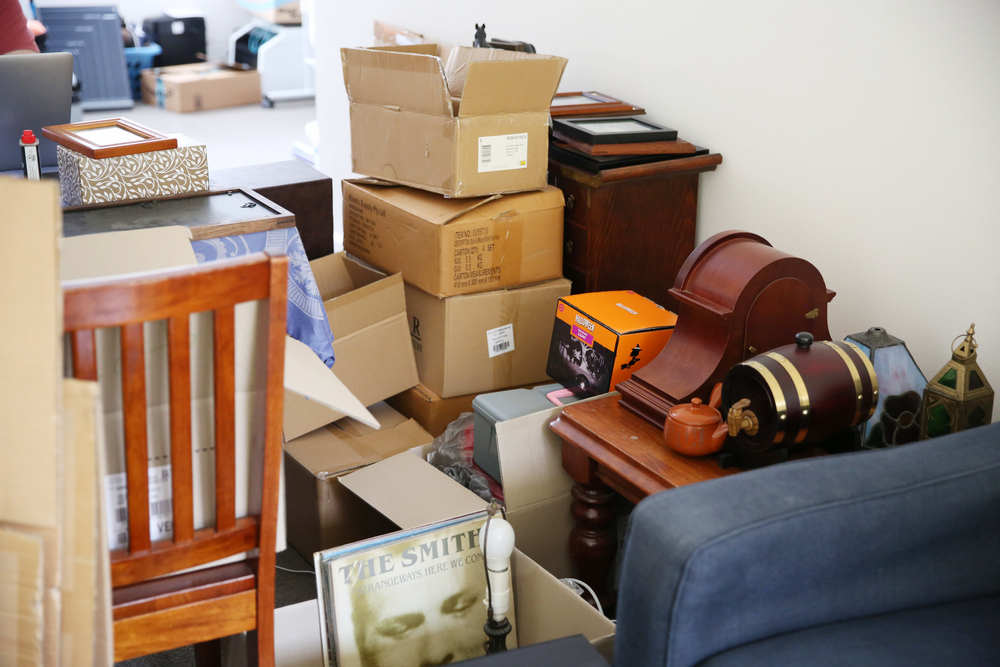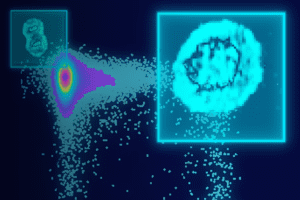Hoarding Disorder: A Comprehensive Guide
Hoarding disorder, also known as compulsive hoarding, is a persistent difficulty discarding or parting with possessions, regardless of their actual value. This behaviour results in the accumulation of items that clutter and disrupt living spaces, significantly impacting daily functioning. In addressing this, let’s delve into the causes, effects, and treatment options for hoarding disorder.
What is Hoarding Disorder? Exploring its Causes
Hoarding disorder, with its complex etiology, has been linked to genetic factors. Individuals with a first-degree relative diagnosed with hoarding disorder have a significantly increased likelihood of developing the condition themselves. This familial tendency suggests that hoarding may be partly heritable, perhaps due to shared genetic vulnerabilities or environmental influences within families.
In addition to genetic factors, neuroscientific research has shed light on the neurological underpinnings of hoarding disorder. Advanced neuroimaging techniques were used to examine the brain activity of individuals with hoarding disorder. The findings revealed distinct patterns of abnormal activity in brain regions responsible for decision-making, organisation, and emotional regulation. Specifically, areas like the anterior cingulate cortex and the insula, which are crucial for error detection, decision-making, and emotional responses, showed altered activity in hoarders. These abnormalities may contribute to the difficulties in decision-making and emotional attachment to possessions observed in hoarding disorder.
Moreover, other neuroimaging studies have focused on the prefrontal cortex, a region implicated in executive function and decision-making. Individuals with hoarding disorder often exhibit impaired executive function, struggling with tasks involving organising, categorising, and decision-making – core challenges in managing possessions.
The Psychology of Hoarding Disorder
Hoarding disorder is intricately linked with various psychological conditions, forming a multifaceted mental health scenario. The occurrence of anxiety, depression, and obsessive-compulsive disorder (OCD) is remarkably high among individuals grappling with hoarding disorder, often intensifying the hoarding behaviors. Notably, anxiety frequently coexists as a comorbid condition; individuals may resort to accumulating items as a strategy to mitigate anxious thoughts or alleviate feelings of distress.
Furthermore, depression significantly influences hoarding behavior. Individuals struggling with hoarding often experience profound sadness and a sense of helplessness, leading to a strengthened emotional attachment to their possessions, which they perceive as sources of comfort or facets of their identity. Additionally, the relationship between OCD and hoarding is notably complex. Although hoarding was once viewed as a subtype of OCD, it is now recognised as a distinct condition. Characterised by an overwhelming urge to save items and significant distress at the thought of discarding them, hoarding disorder presents unique challenges distinct from those observed in traditional OCD cases.
Trauma and Stressful Life Events
Another critical aspect of the psychological underpinnings of hoarding disorder is the role of trauma and stressful life events. Individuals with hoarding disorder often report a history of traumatic or stressful life events. These could include loss of a loved one, abusive relationships, or other significant life stressors. The act of hoarding can then become a maladaptive coping mechanism, providing a sense of security or control in response to these past traumas.
Understanding the Impact of Hoarding Disorder on Daily Life
Hoarding disorder severely impacts the functionality and safety of living environments. The accumulation of excessive possessions leads to cluttered, unusable living spaces. This clutter can limit activities such as cooking, cleaning, and sleeping, and poses significant health risks. The study emphasises that in extreme cases, hoarding can create hazardous conditions, like fire risks and unsanitary environments, leading to severe consequences for the individual and their family.
Social and Emotional Consequences
Additionally, the social and emotional impact of hoarding disorder is profound. The embarrassment and shame associated with the condition often lead to social isolation, as individuals with hoarding disorder may avoid inviting others into their homes or withdraw from social interactions. This self-imposed isolation can exacerbate feelings of loneliness and depression, creating a vicious cycle that further entrenches hoarding behaviours.
Furthermore, hoarding can strain family relationships, resulting in conflict and distress for both the hoarder and their family members. These relational difficulties, noting that family members may feel frustration, anger, or despair in response to the hoarding situation. These strained relationships can further contribute to the hoarder’s sense of isolation and emotional distress.
Effective Treatment Strategies for Hoarding Disorder
Cognitive-Behavioural Therapy (CBT)
Cognitive-Behavioural Therapy (CBT) is the cornerstone of treatment for hoarding disorder, focusing on modifying the problematic thinking and behaviours associated with hoarding. This therapy involves helping individuals challenge and change their beliefs about the need to keep items and improve their decision-making and organisational skills. It also addresses emotional attachments to possessions and helps in developing strategies to prevent relapse.
Pharmacotherapy and Combined Treatment Approaches
While there is no medication specifically for hoarding disorder, medications used for related conditions like depression and OCD may offer some benefits. The use of selective serotonin reuptake inhibitors (SSRIs) in managing symptoms associated with hoarding, particularly when combined with CBT. The combined approach often yields better outcomes, as medication can help manage underlying anxiety or depressive symptoms, making individuals more receptive to CBT.
Family Involvement and Support Systems
Involving family members and creating a support system are crucial components of treatment. Educating family members about the condition, teaching them how to effectively support their loved one without enabling hoarding behaviours, and addressing relational conflicts are key aspects of this approach. Support groups and community resources also play a vital role in providing ongoing support and motivation.
Navigating Forward: Key Insights in Managing Hoarding Disorder
Tailoring treatment to the individual’s unique needs is essential in managing hoarding disorder effectively. As each case presents its own set of challenges and complexities, personalised therapy plans, are crucial. These plans may combine different therapeutic approaches, adjust to the severity of the disorder, and address any co-occurring mental health issues.
Furthermore, hoarding disorder is an ongoing process. The importance of continued support and maintenance strategies to prevent relapse. Post-treatment support groups, ongoing therapy sessions, or check-ins with mental health professionals can provide the necessary long-term support.
Finally, misconceptions and stigma surrounding the condition often prevent individuals from seeking help. Efforts in education can improve societal attitudes, encourage early intervention, and foster a supportive environment for those affected.
References
-
Frost, R. O., & Gross, R. C. (1993, May 1). The hoarding of possessions. Behaviour Research and Therapy. https://doi.org/10.1016/0005-7967(93)90094-b
-
Samuels, J. F., Bienvenu, O. J., Grados, M. A., Cullen, B., Riddle, M. A., Liang, K. Y., Eaton, W. W., & Nestadt, G. (2008, July). Prevalence and correlates of hoarding behavior in a community-based sample. Behaviour Research and Therapy, 46(7), 836–844. https://doi.org/10.1016/j.brat.2008.04.004
-
Dozier, M. E., & Ayers, C. R. (2017). The Etiology of Hoarding Disorder: A Review. Psychopathology, 50(5), 291–296. https://doi.org/10.1159/000479235
-
Tolin, D., Kiehl, K., Worhunsky, P., Book, G., & Maltby, N. (2008, May 19). An exploratory study of the neural mechanisms of decision making in compulsive hoarding. Psychological Medicine, 39(2), 325–336. https://doi.org/10.1017/s0033291708003371
-
Grisham, J. R., Frost, R. O., Steketee, G., Kim, H. J., & Hood, S. (2006, January). Age of onset of compulsive hoarding. Journal of Anxiety Disorders, 20(5), 675–686. https://doi.org/10.1016/j.janxdis.2005.07.004
-
Tolin, D. F., Meunier, S. A., Frost, R. O., & Steketee, G. (2010, August 30). Course of compulsive hoarding and its relationship to life events. Depression and Anxiety, 27(9), 829–838. https://doi.org/10.1002/da.20684
-
Tolin, D. F., Frost, R. O., Steketee, G., & Fitch, K. E. (2008, March). Family burden of compulsive hoarding: Results of an internet survey. Behaviour Research and Therapy, 46(3), 334–344. https://doi.org/10.1016/j.brat.2007.12.008
-
Tolin, D. F., Frost, R. O., Steketee, G., & Muroff, J. (2015, January 14). COGNITIVE BEHAVIORAL THERAPY FOR HOARDING DISORDER: A META-ANALYSIS. Depression and Anxiety, 32(3), 158–166. https://doi.org/10.1002/da.22327
-
Ayers, C. R., Saxena, S., Golshan, S., & Wetherell, J. L. (2009, June 22). Age at onset and clinical features of late life compulsive hoarding. International Journal of Geriatric Psychiatry, 25(2), 142–149. https://doi.org/10.1002/gps.2310
-
Steketee, G., Frost, R. O., Tolin, D. F., Rasmussen, J., & Brown, T. A. (2010, March 24). Waitlist-controlled trial of cognitive behavior therapy for hoarding disorder. Depression and Anxiety, 27(5), 476–484. https://doi.org/10.1002/da.20673
-
Saxena, S. (2011, March 14). Pharmacotherapy of compulsive hoarding. Journal of Clinical Psychology, 67(5), 477–484. https://doi.org/10.1002/jclp.20792
-
Muroff, J., Steketee, G., Rasmussen, J., Gibson, A., Bratiotis, C., & Sorrentino, C. (2009, July). Group cognitive and behavioral treatment for compulsive hoarding: a preliminary trial. Depression and Anxiety, 26(7), 634–640. https://doi.org/10.1002/da.20591










